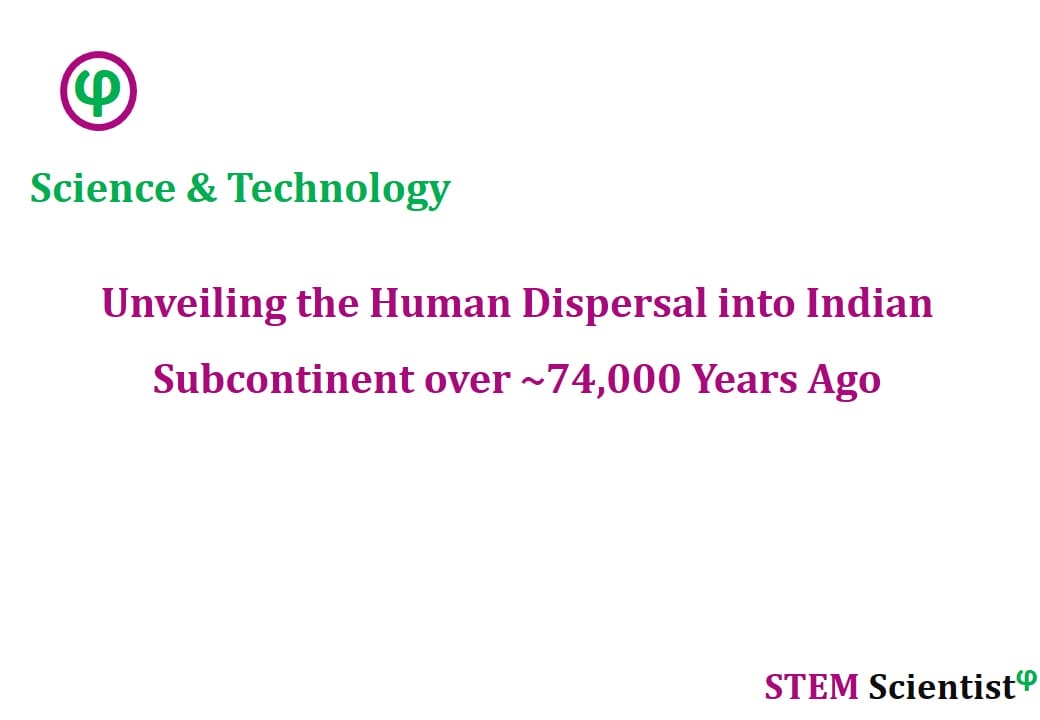
The following study was conducted by Scientists from School of Social Science, University of Queensland, St Lucia, QLD, Australia; Australian Research Council (ARC) Centre of Excellence for Australian Biodiversity and Heritage, University of Wollongong, Wollongong, NSW, Australia; Department of Archaeology, Max Planck Institute for the Science of Human History, Kahlaische Strasse, Germany; Centre for Archaeological Science, School of Earth, Atmospheric and Life Sciences, University of Wollongong, Wollongong, NSW, Australia; Desert Research Institute, Reno, Nevada, USA; Department of Geography, University of Cambridge, Downing Place Cambridge, Cambridge, UK; Department of Ancient History, Culture and Archaeology, University of Allahabad, Allahabad, Uttar Pradesh, India; McDonald Institute for Archaeological Research, University of Cambridge, Downing Street, Cambridge, UK; Office of Scholarly Communication, Cambridge University Library, West Road, Cambridge, UK; Australian Research Council (ARC) Centre of Excellence for Australian Biodiversity and Heritage, Australian National University, College of Asia and the Pacific, Canberra, ACT, Australia; Department of Ancient History and Archaeology, University of Madras, Chepauk, Chennai, India; Department of Ancient Indian History, Culture and Archaeology, Banaras Hindu University, Varanasi, India; Department of Anthropology, National Museum of Natural History, Smithsonian Institution, Washington, DC, USA; Department of Anthropology and Archaeology, University of Calgary, Calgary, Canada. Study is published in Nature Communications Journal as detailed below.
Nature Communications; Volume 11, Article Number: 961; (2020)
Human Occupation of Northern India Spans the Toba Super-Eruption ~74,000 Years Ago
Abstract
India is located at a critical geographic crossroads for understanding the dispersal of Homo sapiens out of Africa and into Asia and Oceania. Here we report evidence for long-term human occupation, spanning the last ~80 thousand years, at the site of Dhaba in the Middle Son River Valley of Central India. An unchanging stone tool industry is found at Dhaba spanning the Toba eruption of ~74 ka (i.e., the Youngest Toba Tuff, YTT) bracketed between ages of 79.6 ± 3.2 and 65.2 ± 3.1 ka, with the introduction of microlithic technology ~48 ka. The lithic industry from Dhaba strongly resembles stone tool assemblages from the African Middle Stone Age (MSA) and Arabia, and the earliest artefacts from Australia, suggesting that it is likely the product of Homo sapiens as they dispersed eastward out of Africa.
Source:
Nature Communications
URL: https://www.nature.com/articles/s41467-020-14668-4
Citation:
Clarkson, C., Harris, C., Li, B. et al. Human occupation of northern India spans the Toba super-eruption ~74,000 years ago. Nat Commun 11, 961 (2020). https://doi.org/10.1038/s41467-020-14668-4


